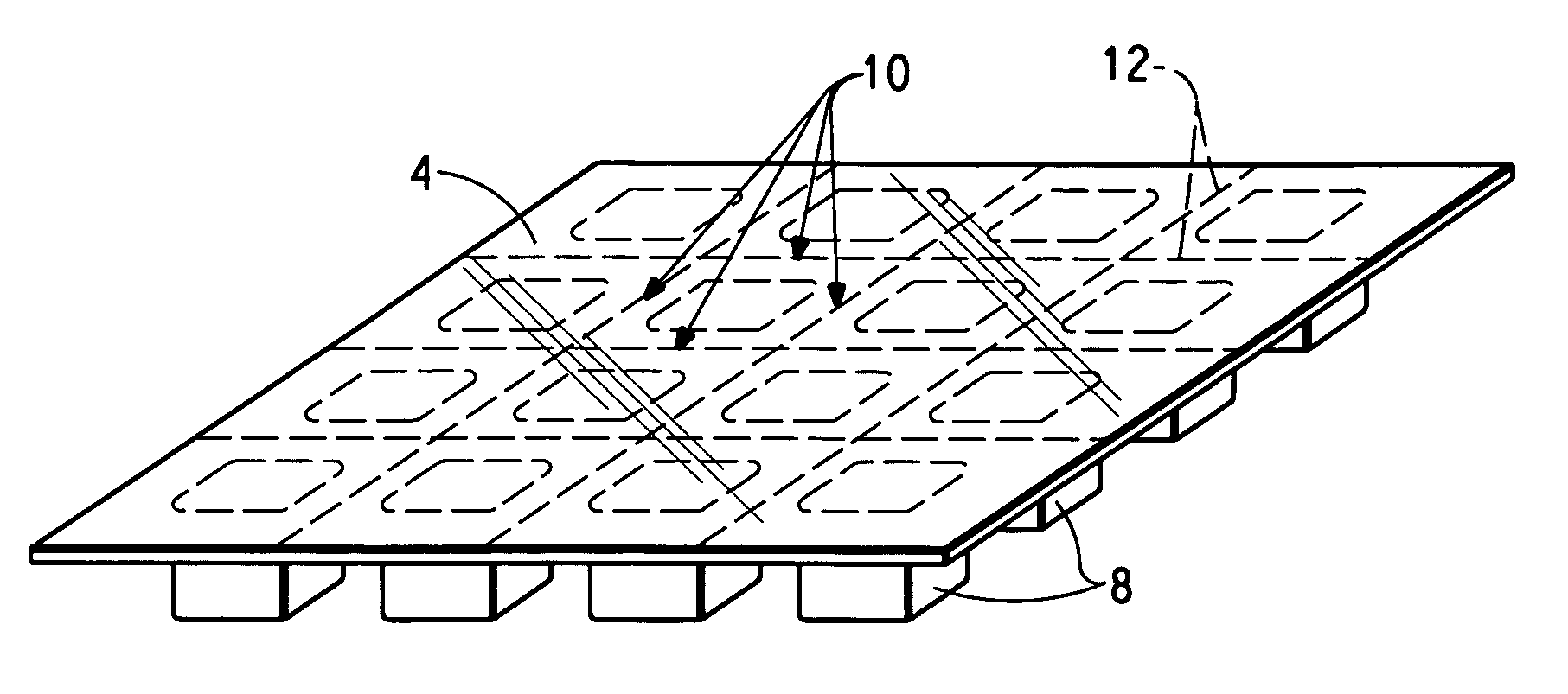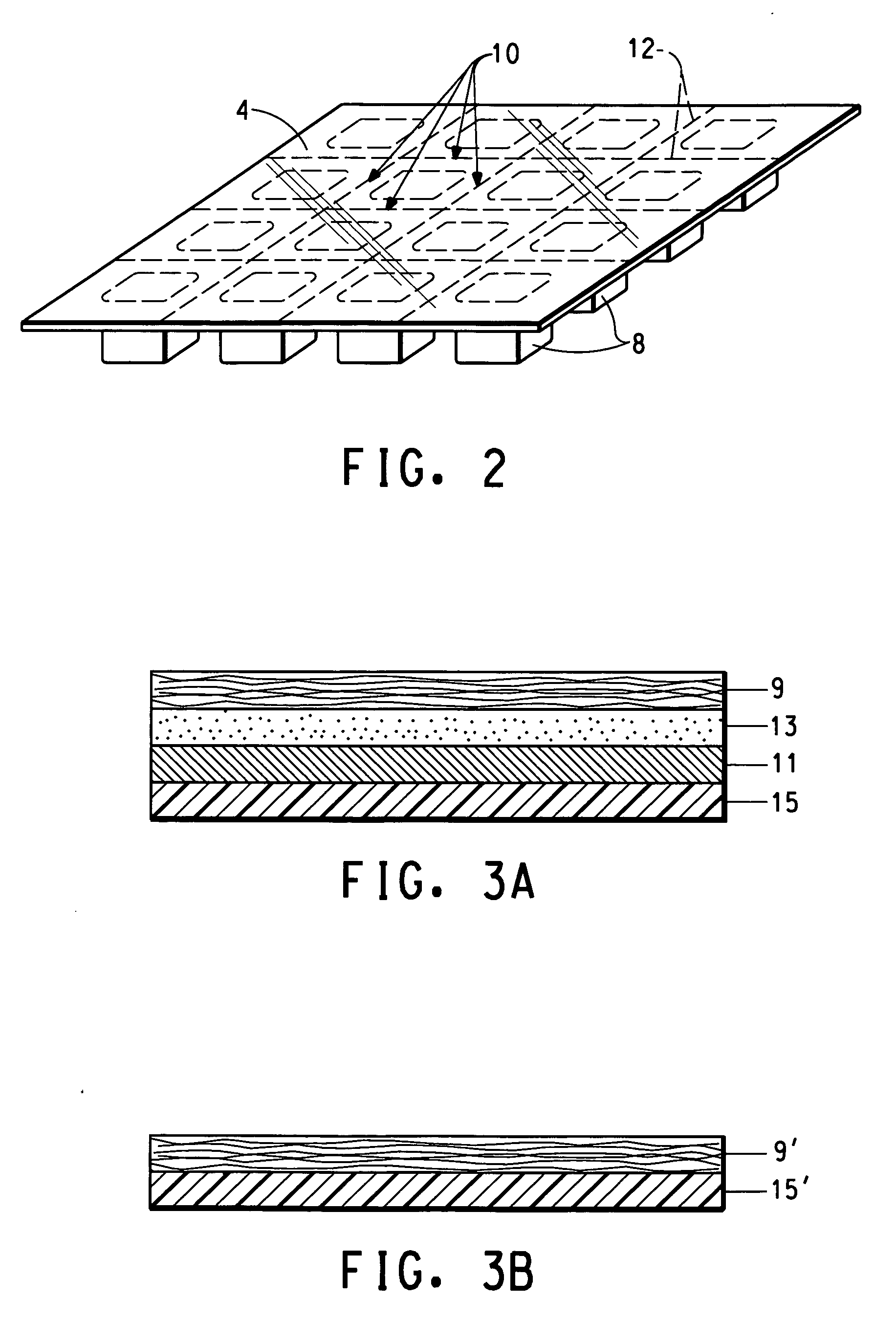Heavy calendered multiple component sheets and multi-layer laminates and packages therefrom
a multi-layer laminate and multi-component technology, applied in the field of heavy calendered sheet materials, can solve the problems of low line speed, low thermal bonding level, and insufficient strength or tear properties for certain end uses,
- Summary
- Abstract
- Description
- Claims
- Application Information
AI Technical Summary
Benefits of technology
Problems solved by technology
Method used
Image
Examples
example 1
[0065] This Example demonstrates the preparation of a smooth-calendered LLDPE / PET sheet by calendering a sheath / core spunbond nonwoven fabric under conditions that result in significant flowing of the sheath component into the interstitial spaces between the fibers, and fabrication of a foil laminate and child-resistant blister packages therefrom.
[0066] The sheath / core spunbond fabric was prepared in a bicomponent spunbond process using linear low density polyethylene with a melting point of about 126° C. as the sheath, and poly(ethylene terephthalate) polyester with a melting point of about 260° C. as the core. The polyester resin was crystallized and dried before use.
[0067] The polyester and the polyethylene were heated in separate extruders and were extruded, filtered and metered to a bicomponent spin block designed to provide a sheath-core filament cross section. The polymers were metered to provide fibers that were 30% polyethylene (sheath) and 70% polyester (core), based on ...
examples 2a and 2b
[0078] These Examples demonstrate preparation of heavily calendered sheets of the present invention suitable for use in blister packaging.
[0079] Sheath-core spunbond webs were prepared as described above for Example 1. The spunbond webs were heavily-calendered using the roll configuration shown in FIG. 1C. The calendering pressure was 400 pli in each calender nip. The spunbond web used in Example 2a had a basis weight of about 2 oz / yd2 and the spunbond web used in Example 2b had a basis weight of about 2.5 oz / yd2. Calendering process conditions and calendered sheet properties are given below in Table II.
PUM
| Property | Measurement | Unit |
|---|---|---|
| Percent by mass | aaaaa | aaaaa |
| Percent by mass | aaaaa | aaaaa |
| Percent by mass | aaaaa | aaaaa |
Abstract
Description
Claims
Application Information
 Login to View More
Login to View More - R&D
- Intellectual Property
- Life Sciences
- Materials
- Tech Scout
- Unparalleled Data Quality
- Higher Quality Content
- 60% Fewer Hallucinations
Browse by: Latest US Patents, China's latest patents, Technical Efficacy Thesaurus, Application Domain, Technology Topic, Popular Technical Reports.
© 2025 PatSnap. All rights reserved.Legal|Privacy policy|Modern Slavery Act Transparency Statement|Sitemap|About US| Contact US: help@patsnap.com



